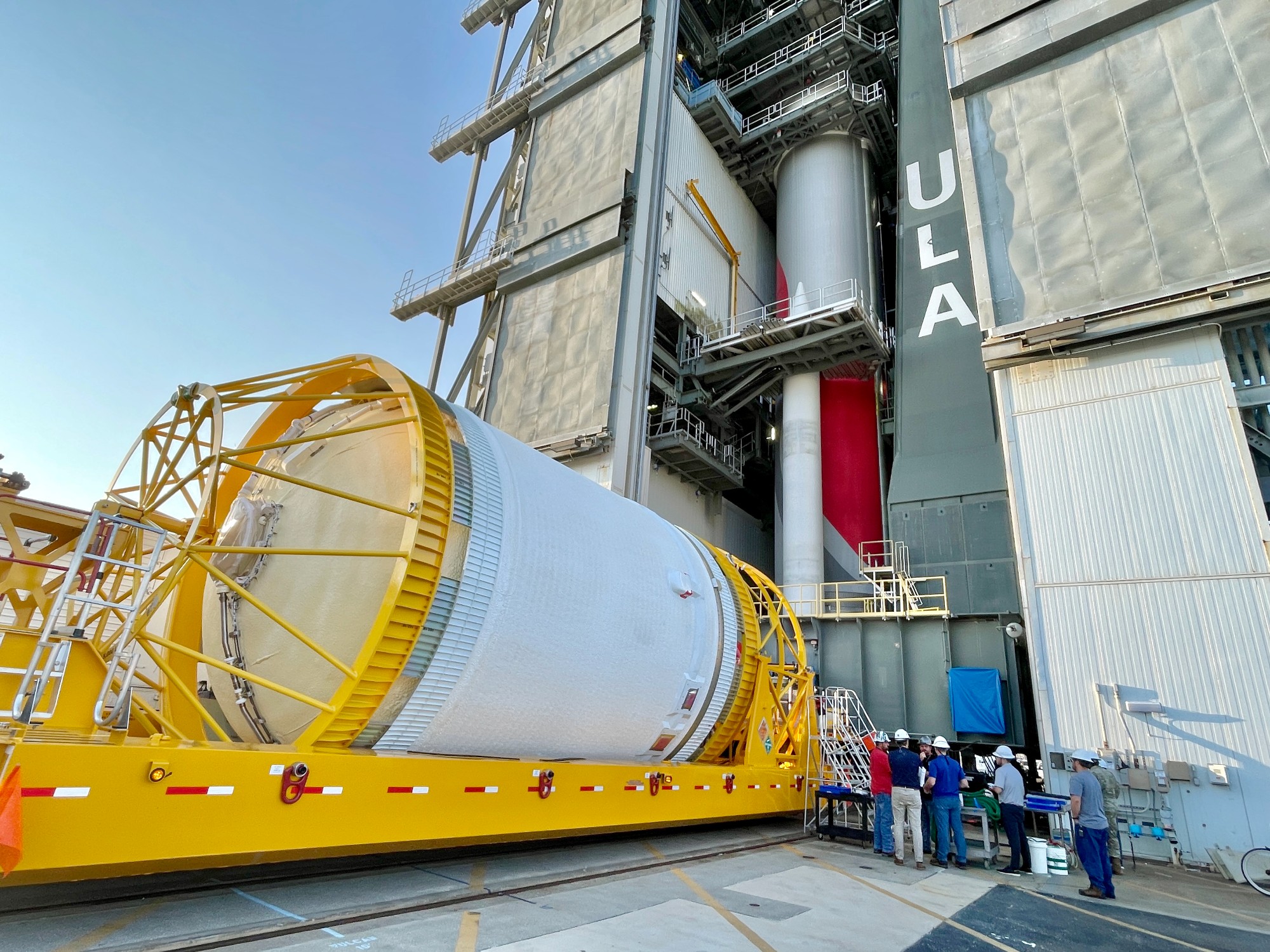Tech
United Launch Alliance prepares for crucial certification flight as U.S. Space Force watches closely

NATIONAL HARBOR, Md. — As United Launch Alliance (ULA) readies its Vulcan Centaur rocket for its second test flight, a key milestone in the rocket’s certification process for national security launches, a senior U.S. Space Force official cautioned that a successful launch will not immediately guarantee certification.
“I’m definitely looking forward to that second certification flight. But it’s not instantaneous that if they have a clean flight, they’re automatically certified,” Brig. Gen. Kristin Panzenhagen, the U.S. Space Force’s program executive officer for assured access to space, said Sept. 18 at the Air Space & Cyber Conference.
ULA is projecting the Cert-2 mission to lift off in October. This will be the second of two flights required for the U.S. Space Force to certify Vulcan Centaur for launching sensitive national security payloads. The first flight, Cert-1, launched on January 8, successfully deploying Astrobotic’s Peregrine lunar lander.
The Vulcan Centaur is designed to replace ULA’s Atlas 5 rocket for national security launches, a transition that is seen as critical to eliminating reliance on the Russian-built RD-180 engine, which powers the Atlas 5. In 2020, the Space Force selected ULA and SpaceX as its two primary launch providers under the National Security Space Launch (NSSL) Phase 2 program, a five-year contract. However, Vulcan has yet to perform any national security missions due to certification delays, partly driven by engine development issues and a March 2023 explosion during testing of the Centaur upper stage.
The Pentagon, meanwhile, has grown increasingly concerned about ULA’s ability to meet its commitments under the NSSL contract. Panzenhagen noted that the Cert-1 mission was a success: “What we saw on the first certification flight for Vulcan was a very clean flight. The rocket performed really well.”
The upcoming Cert-2 mission will carry an inert payload, originally meant to serve as a backup for the first flight. The payload will replace Sierra Space’s Dream Chaser cargo spaceplane, which is behind schedule and will not be ready in time. The inert payload will enable ULA to conduct experiments and demonstrate new technologies for future missions, with particular attention on assessing the Centaur upper stage’s capabilities.
Even if the second flight proceeds smoothly, Panzenhagen emphasized that ULA’s certification will not be immediate. “We will have a lot of data to go through after that just to make sure that everything performed up to expectations,” she said. “We will need some time after that to make sure that everything was clean.”
Despite these hurdles, she expressed optimism: “We’re definitely looking forward to having them be completely certified, so we can start those national security space launches.” ULA has set its sights on launching two national security missions, USSF-106 and USSF-87, before the end of 2024, pending certification.
New Glenn is next
Panzenhagen also commented on a new entrant in the national security launch landscape: Blue Origin. Its heavy-lift rocket, New Glenn, is still under development but was selected by the Space Force alongside SpaceX and ULA for the next phase of the NSSL program. The program’s Phase 3 Lane 1, set to begin in fiscal year 2025, will see the three companies competing for mission assignments through 2029.
Blue Origin’s New Glenn is aiming for its first flight later this year after delays that pushed its debut from late 2022. Its first mission is slated to carry a prototype Blue Ring spacecraft platform.
Panzenhagen expressed cautious optimism about New Glenn’s prospects.
“Every time we can get more providers, we’re looking forward to that,” Panzenhagen said. New Glenn would be on a path to certification after completing at least two flights. “This will be the first flight of a brand new rocket, so we’re very excited to see how that performs.”










